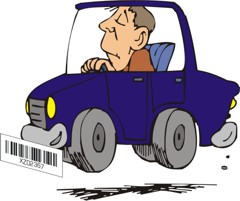
|
Software + Services + Expertise |

|

Unlike ERP systems, which track inventory by location, the BellHawk software tracks containers of material using license-plate-number (LPN) container tracking methods. The advantages of the use of these methods are:
LPN container tracking is now the standard for tracking materials in the Global supply chain. It is the basis of the GS1 (Global Standards One) standards for barcode and RFID tracking as well as having been adopted by US Government agencies such as the FDA, FAA, DOT, and many others, as well as by the European Union and Chinese Government. It is also used by organizations such as FedEX and UPS to track the delivery of their parcels.
Please click on the following link to return to "How BellHawk Tracks Materials".
| About KnarrTek | Technology |

|
Services | Cost Savings |
| Copyright © KnarrTek Inc. 2024 |
| Technology |

|
Services |
| About KnarrTek | Copyright © KnarrTek Inc. 2024 | Cost Savings |